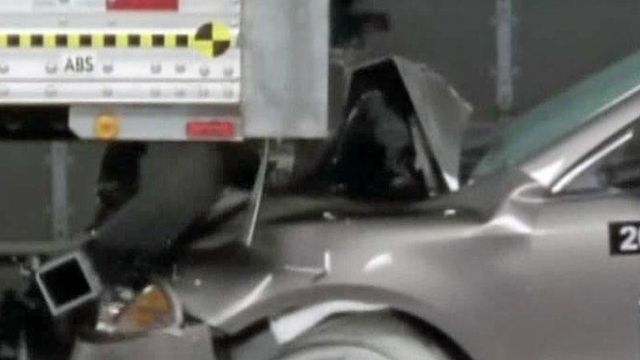Auto insurers request stronger underride regulations
Drive long enough and you will see an accident where a car is crushed under the back of a tractor-trailer because of rear-end impact.
Posted — UpdatedThe National Traffic Highway Safety Administration estimates that 423 people die each year and 5,000 are injured in underride accidents – when a car rear-ends a tractor-trailer and is crushed by the impact.
A long piece of steel at the back of trucks called an underride guard is supposed to keep that from happening. Often they don’t work, according to the Insurance Institute for Highway Safety, a non profit organization of auto insurers that’s pushing for stronger regulation.
Researchers performed crash tests with cars that get top safety ratings. Testers found at speeds of just 35 mph, underride guards can fail.
IIHS President Adrian Lund said because of advances in safety technology, hitting a brick wall in a car would actually be safer.
"When you hit a large truck that protection is bypassed. We're talking about occupants actually making direct contact with the back of the trucks with their heads," Lund said.
Roy Crawford’s 16-year-old son Guy died in an underride accident in 1994. It was dark, and the truck had no rear reflectors and no underride guard.
“The child I lost was my favorite person in the world. It's not something you get over," Crawford said. “It's terribly sad every time it happens because it's completely avoidable."
The trucking industry agrees with IIHS that it's time to do something.
“There's clearly a step that probably needs to be taken," said President and CEO of American Trucking Associations Bill Graves.
Graves added, "What the federal government thought was adequate a number of years ago when these specifications were developed is probably not adequate today."
NHTSA said it is aware of the problem. However the agency is not making any commitments to developing new regulations any time soon.
Copyright 2024 by Capitol Broadcasting Company. All rights reserved. This material may not be published, broadcast, rewritten or redistributed.





